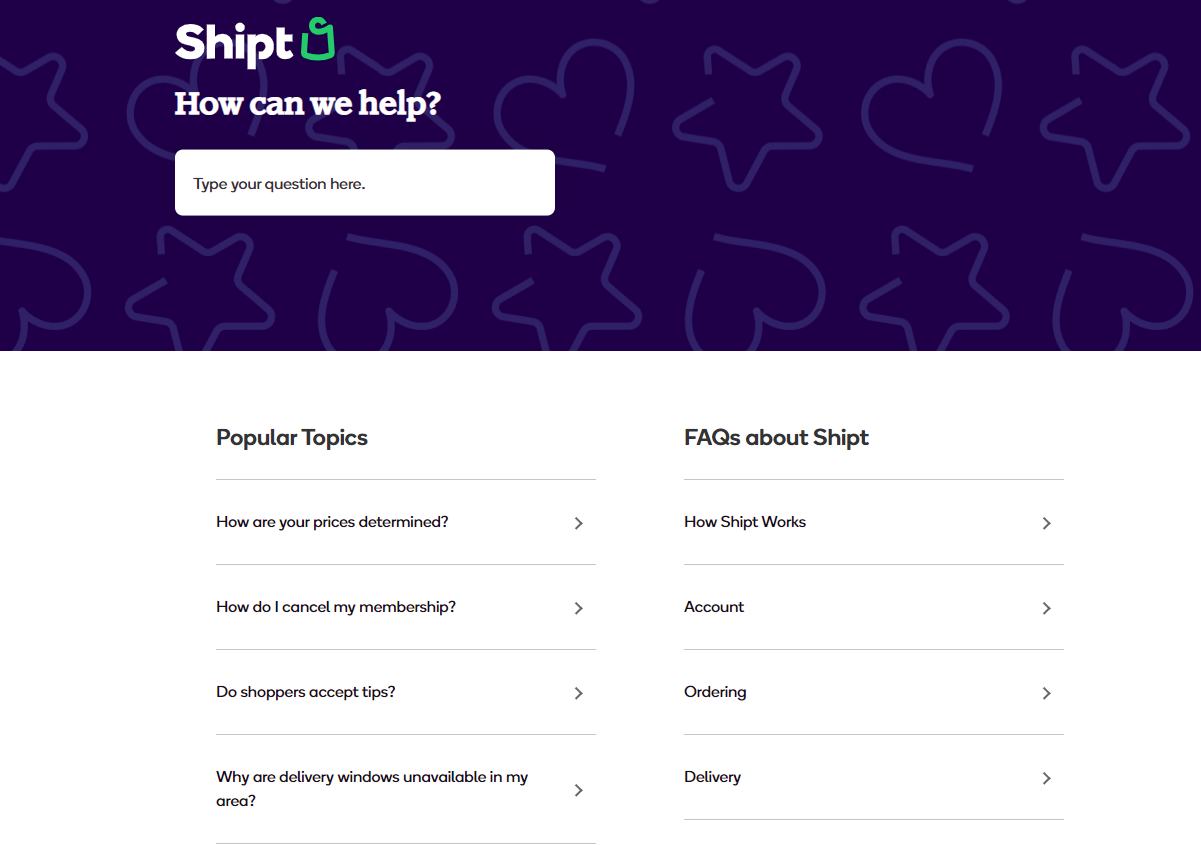Let's face it, managing tech processes is no longer a one (wo)man job —it's a collective effort. In fact, software teams that collaborate enjoy a 62% higher success rate, highlighting the value of teamwork.
IT teams are at the frontline of handling technological errors and are responsible for developing, maintaining, and updating all tech-related aspects.
The problem? Companies need to keep their IT teams up to date with the latest trends and technologies, promote knowledge sharing, and ensure accessible information for everyone. It's not as easy as it sounds, hear us out.
IT knowledge bases are an excellent way to tackle these issues.
They serve as centralized repositories for storing important information and help employees find documentation easily whenever they need it. Having a dedicated platform for essential information also makes it simpler to share knowledge.
But the question is how can your organization implement a knowledge repository for your IT team? What software exists to build an IT knowledge base?
That’s what we're going to discover in our latest article. We'll talk about what an IT knowledge base is, how to create one, and how it can benefit your team.
What is an IT Knowledge Base and Why is it Important?
An IT knowledge base is a software application that stores essential information for IT teams. Many refer to knowledge bases as "self-service solutions" that enable employees to find answers independently, without waiting for colleagues.
Imagine a new employee needing crucial information about the software they're working on.
Instead of endless chats and email chains with colleagues or searching through papers, they can log into your knowledge base and find the documents they need.
Besides serving as a one-stop shop for all technical documentation, knowledge bases offer several other benefits:
- They ease the onboarding process.
- They ensure consistent information across the company.
- They save time searching for information.
- They enhance collaboration.
Think of it as an internal "Google" for your software development team, allowing anyone to access company-related information whenever they need it.
Companies can create personalized IT knowledge bases to store important documents such as SOPs, FAQs, how-to guides, video explanations, policies and procedures manuals, coding standards, tools, and general rules for the IT department.
This approach empowers IT teams, the backbone of your organization, with quick access to valuable information, making their jobs easier and boosting their productivity.
Internal Vs. External Knowledge Base
Developers often use two types of knowledge bases: internal and external. The main difference between the two is who they’re for. Internal knowledge bases are for your organization and can be accessed only by people you approve of, while anyone can access external knowledge bases.
| Type of knowledge base | What it is | Examples | Accessibility |
|---|---|---|---|
Internal Knowledge Base |
A closed library for your organization. Employees can find helpful resources, troubleshooting guides, technical documents, and FAQs quickly. |
Company intranets, internal wikis. |
Access is limited to approved employees |
External Knowledge Base |
Open to everyone, allowing users from all over the Internet to find resources, ask questions, share knowledge, and collaborate on projects. |
Stack Overflow, Quora, GitHub |
Access is open to the public |
Planning Your IT Knowledge Base
You might be new to the knowledge-base world, and that's okay! Planning your knowledge base beforehand is crucial for organizing your knowledge management process and achieving the best results.
Here's what you need to do:
Consider Team Size and Responsibilities
When choosing a knowledge base, it's important to consider the number of employees using it. For smaller IT teams with clearly defined roles and fewer responsibilities, simpler knowledge base platforms that offer easy access to information and basic collaboration options may be more suitable.
However, if your team has multiple members with diverse responsibilities, opting for more sophisticated knowledge-base software might be a better solution.
Consider the scope of the work, who will use the knowledge base, and what they will use it for. Larger IT teams may need software with advanced features like powerful search, analytics, and artificial intelligence capabilities.
Identify Your Needs and Goals
Incorporating a knowledge base into your company should serve strategic goals. Therefore, before choosing software, it's essential to clarify your objectives and priorities. This will help you understand what you aim to achieve with your knowledge base. Consider the following questions:
- Do you want to enhance internal collaboration or streamline the onboarding process?
- Who in your IT team and organization will be using the knowledge base?
- What common questions or issues should the knowledge base address?
- What topics and content are necessary for your knowledge base?
- Who will be responsible for the knowledge base management?
Understanding your business needs will help you choose the right knowledge base software, simplifying processes that are otherwise lengthy and complicated.
Gather Information
The next step is to start gathering documents that will be important for your IT team. Think of every documentation your department might find helpful.
This can include anything from FAQs, standard operating procedures, and troubleshooting guides for common issues and error codes, to project plans, status reports, and training materials for new employees.
At this stage, you may also want to put together a team of professionals who will help collect all the relevant and important information that will go into your IT knowledge base. Also, keep in mind the best practices for creating IT documentation:
- Evaluate your existing documentation and identify outdated or unnecessary materials.
- Ensure your documentation is clear and understandable for everyone, avoiding unnecessary technical jargon.
- Include features like a table of contents, bookmarks, or jump links to improve usability.
- Maintain a standardized approach in writing, formatting, and organizing your documents.
Choose the Right Software
Choosing a good knowledge base is crucial in order to create an effective one. There are various software options on the market, each offering a range of features that may or may not be necessary for your specific needs. Here are the key features that the software you decide on should ideally include:
- User-friendly dashboard: Ensure the software is easy to navigate, allowing users to find options quickly.
- Document upload: Select a platform that allows you to upload various file types such as documents, images, videos, and other useful formats.
- Access management: Manage who can access, view, and modify documents within your IT knowledge base.
- Search functionality: Opt for software with powerful search capabilities to quickly locate documents.
- Integrations: Ensure the software can integrate with other tools you use.
- Analytics: Track usage and performance to continuously improve your knowledge base over time.
Establish Who Will Have Access and Permissions
Your knowledge base software will be the center of all your company’s wisdom. This means more than one person might need to be included in managing the documentation and the functioning of the software.
Make sure to define who will have access and control over what’s being shared in the knowledge base application.
Set a plan in advance for employees who will take the role of admins and have the right to contribute, read, and modify the content you’ve placed in your knowledge base.
This way, your technical documentation, and all the sensitive information will be safe and well-managed.
Think About Integration Options
Your IT knowledge base is unlikely to function in isolation. You may need other apps to ease the workflow and speed up processes. That’s why you should ensure the knowledge base software you choose supports the integration options you need now or may need in the near future.
For instance, your IT team may need continuous collaboration and communication. Look for software that supports integration with popular conferencing apps like MS Teams or Slack to keep communication smooth.
Keep In Mind Collaboration
It's likely that at some point, you'll need to collaborate with your IT teams when creating your knowledge base. To make this process smoother, ensure that the platform you are using supports collaboration options such as commenting, tagging, and replying.
Collaboration options help multiple users to work together simultaneously, make suggestions and edits, and keep your IT documentation updated, and error-free.
Create a Plan for Updating your Knowledge Base
Even after everything is set, your IT knowledge base will still need maintenance. As your company grows, new employees join, and industry trends change, your knowledge base will need updates.
Keep your knowledge base updated by following these steps:
- Regularly Review: Make sure to regularly review the technical documentation.
- Assign Maintenance Teams: Create teams responsible for maintaining the knowledge base.
- Track Changes: Keep a history of changes. This helps maintain a record of revisions and allows you to revert to previous versions if needed.
- Notify Employees: Make sure to notify employees about all changes in the technical documentation.
Design a Strategy for Adoption and Training
Introducing new software to the workplace can be met with resistance from employees. This happens for several reasons:
- Employees don’t see the benefits of the new software.
- The software is too complex and difficult to use, or it makes employees feel like they are duplicating their work.
- There is inadequate training and support.
- Employees are resistant to change.
Such reasons can slow down software integration, but there are several ways to facilitate employees' adaptation to new technologies.
For example:
- Clearly communicate the benefits of using the software.
- Appoint tech-savvy individuals to explain the software to other employees.
- Involve employees in the software selection process.
- Ask for feedback from employees and try to implement their suggestions.
Building Your IT Knowledge Base with Helpjuice
Having a reliable knowledge base isn't just helpful—it's essential. With so much on their plates, IT professionals need quick access to accurate information to make their work easier.
This is where Helpjuice steps in. Helpjuice helps employees create, manage, and share knowledge.
With this ease-to-use knowledge base software teams can collaborate seamlessly on creating detailed guides, troubleshooting tips, FAQs and so much more.
Instead of searching for answers or relying on busy colleagues, IT professionals can navigate Helpjuice 's user-friendly interface to find exactly what they need.
Moreover, Helpjuice offers multiple other features:
- Intuitive What-You-See-Is-What-You-Get (WYSIWYG) Editor.
- Structured Content Management.
- Multilingual Support.
- Comprehensive Analytics.
- Ability to assign users to groups
- Integration with multiple apps.
Helpjuice eases the process of sharing knowledge and information, helping teams and companies to establish a continuous knowledge flow that not only enables harmonious work but also makes employees feel informed and supported.
How IT Businesses Get Results with Helpjuice
Still not convinced? Here's a success story showcasing how Helpjuice transformed operations for Touch Systems, a software company based in Belgium.
Touch Systems faced 300 weekly phone calls for basic inquiries and disorganized internal documentation, causing delays and extra costs. After adopting Helpjuice, they reduced weekly phone calls by 10% and saved employees 30 minutes weekly in information retrieval time, easing pressure on their support team and boosting efficiency.
This case study highlights how Helpjuice helped Touch Systems optimize operations, improve productivity, and enhance customer satisfaction.
Ready to experience intuitive knowledge management firsthand?





